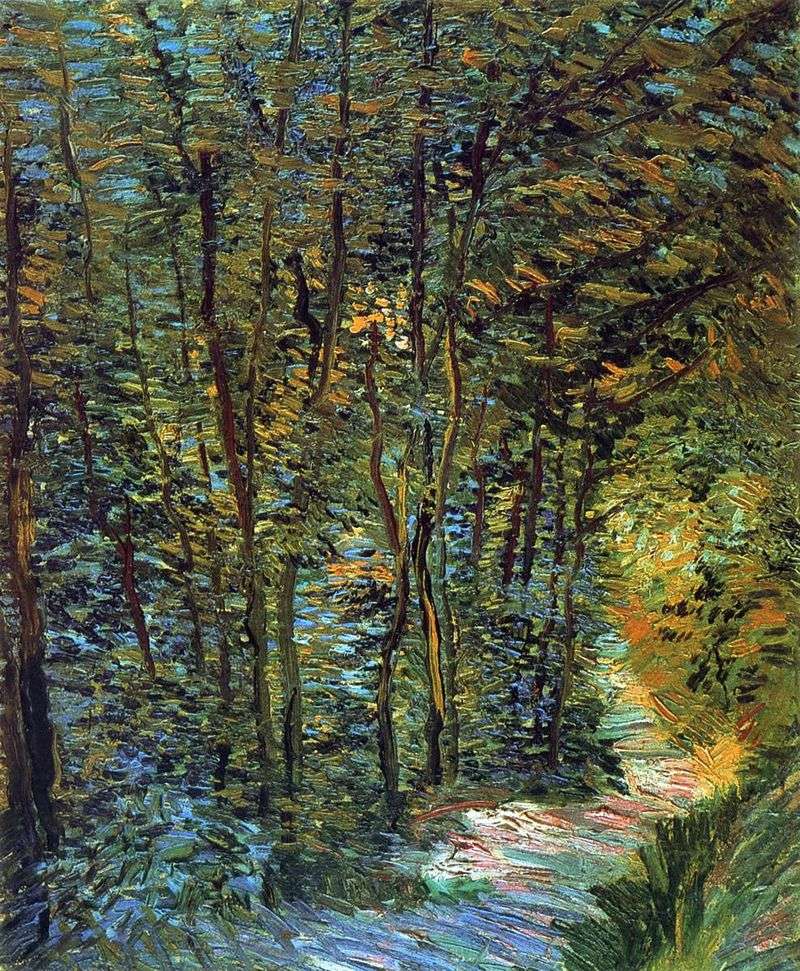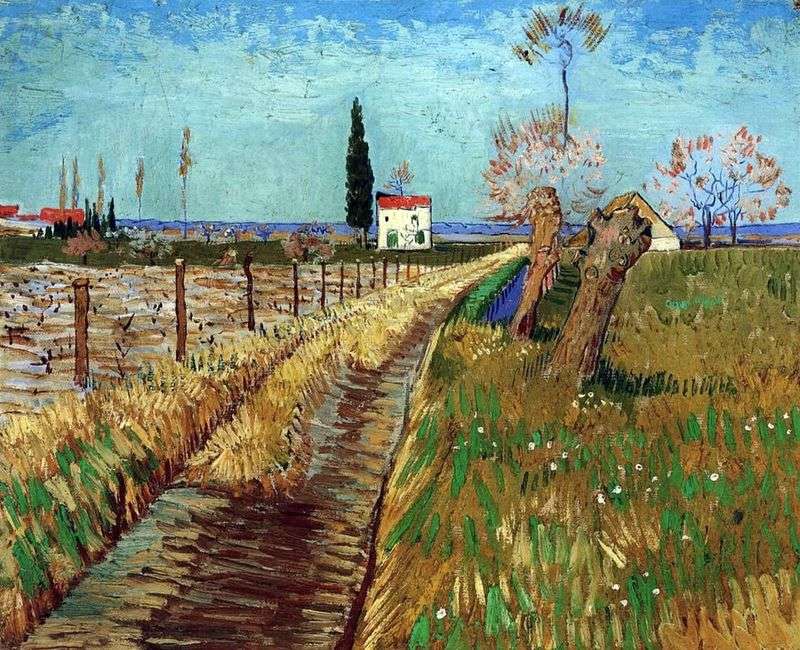
The Paris period of Van Gogh’s work is marked by an unprecedented intensity of work. The fascination with the innovative concepts of impressionism leads to a radical change in the picturesque manner, ways of creative expression and perception of nature. In his paintings, the artist now completely abandons the canons and rules dictated by the classical school of painting.
In this painting in 1887, Van Gogh draws a plot of undergrowth. The artist is inspired by the play of light on the forest greens, and he conveys it with the help of a bright variety of shades. A massive shaded tree trunk divides a small space into two parts, behind it is a brightly lit part of the forest.
The artist avoids the use of black and gray colors, even in deep shadows. The whole picture is written in pure bright shades, which together make up an unprecedented mosaic in color. Illuminated greenery of the distant plan plays warm sunny shades of yellow, strongly contrasting with blue-blue shadows in front of the tree. But both light and shadow are made up of a multitude of different colored strokes, each of which plays a role in the overall color scheme of the picture. The artist’s talent here is manifested in the fact that by means of color Van Gogh managed to show the unprecedented beauty of such an insignificant at first sight.
 Peach in bloom by Vincent Van Gogh
Peach in bloom by Vincent Van Gogh Still life with lemons on a plate by Vincent Van Gogh
Still life with lemons on a plate by Vincent Van Gogh Still life with pears by Vincent Van Gogh
Still life with pears by Vincent Van Gogh A path in the forest by Vincent Van Gogh
A path in the forest by Vincent Van Gogh The garden in Montmartre by Vincent van Gogh
The garden in Montmartre by Vincent van Gogh A path in a field in willows by Vincent Van Gogh
A path in a field in willows by Vincent Van Gogh Trees by Vincent Van Gogh
Trees by Vincent Van Gogh Blooming Garden by Vincent Van Gogh
Blooming Garden by Vincent Van Gogh